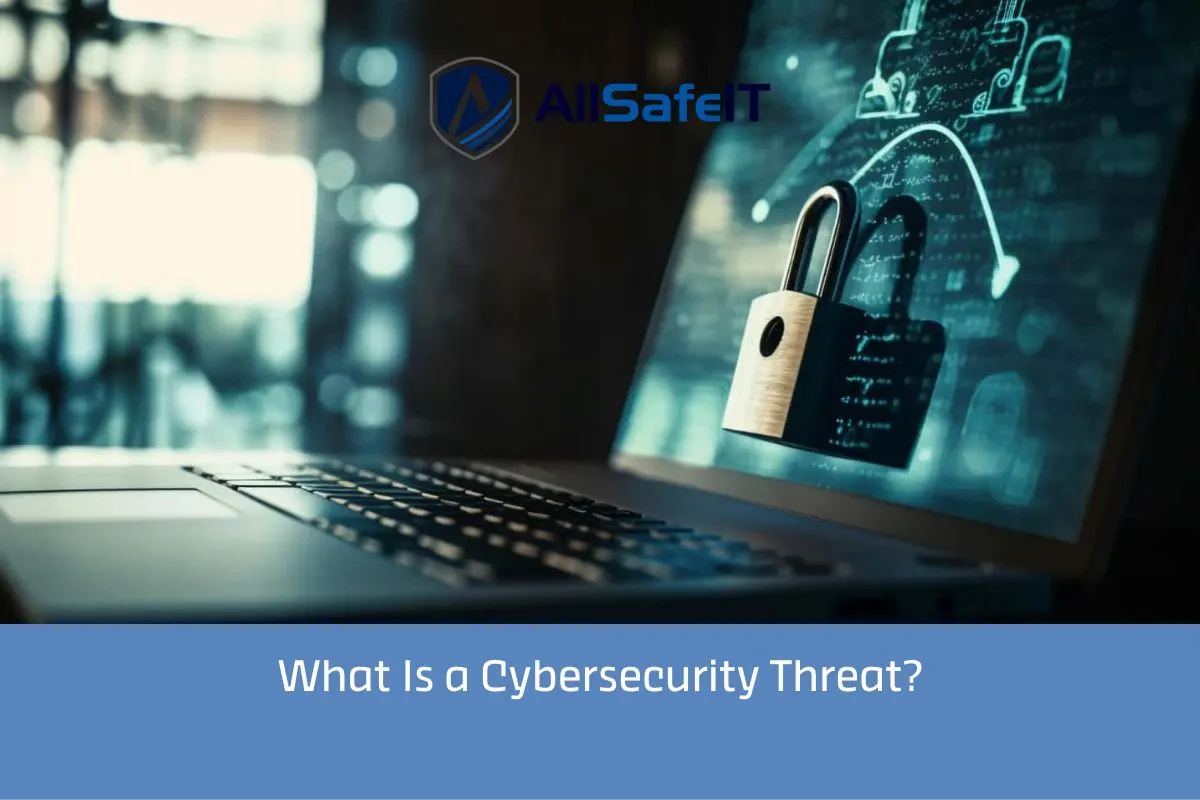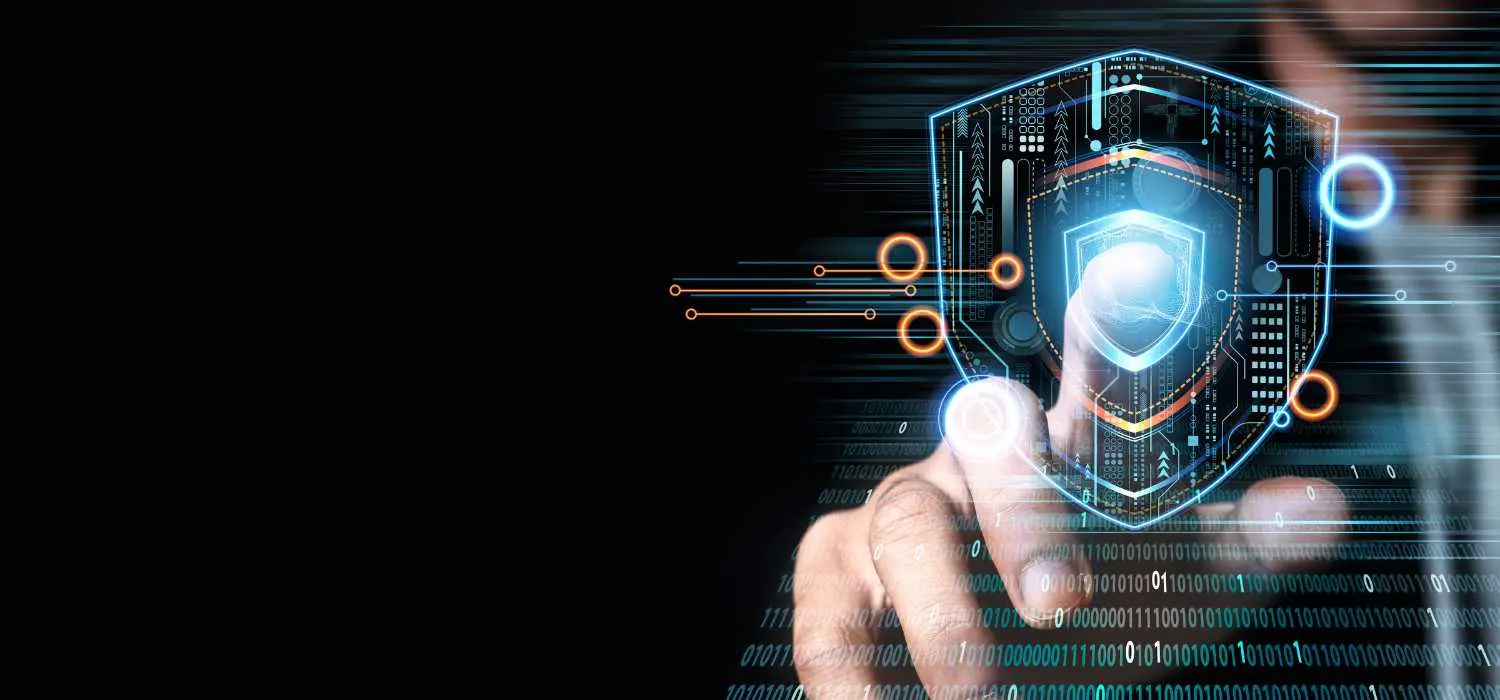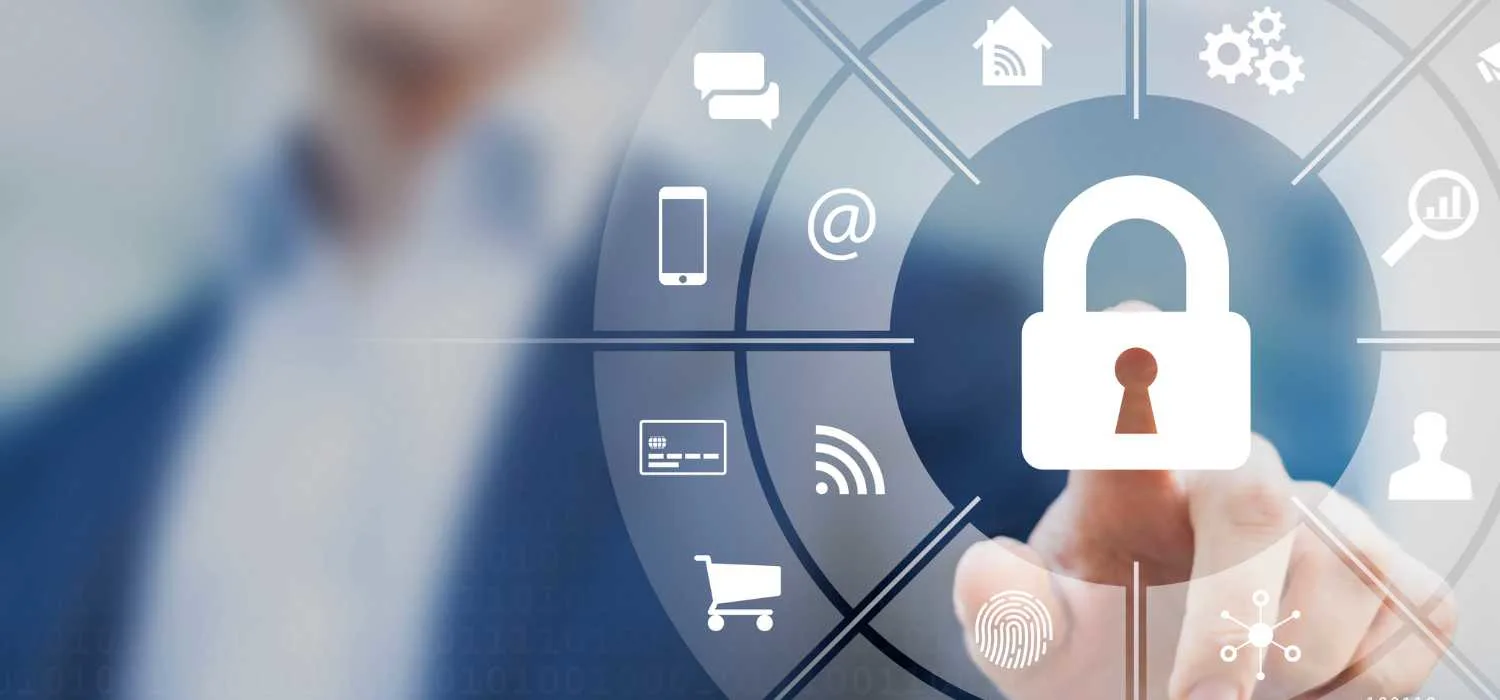
This is some text inside of a div block.
This is some text inside of a div block.
February 26, 2024 4:00 PM
%20(1).webp)
CEO and co-founder
Uncover the complexities of cybersecurity threats and their evolving nature in the digital era, including the potential risks associated with AI technologies.

In the vast ocean of the digital world, every click and login is a voyage into uncertainty. As you steer your business towards growth, beware of the hidden perils of cyber threats lurking beneath the surface, poised to strike at your defenses.
According to a report by the Ponemon Institute, 67% of small and medium-sized businesses in the US were victims of a cyber attack. Shocking, isn't it?
In today's world, where over 60% of businesses have already experienced at least one cyber attack, it's essential to understand what a cybersecurity threat is and how to protect yourself against it.
Cybersecurity threats loom large, posing significant risks to businesses and individuals alike. Let's delve into what these threats entail, their various forms, and their impact on our digital security landscape.
A cybersecurity threat is any potential malicious attack that seeks to unlawfully access data, disrupt digital operations, or damage information.
These threats can originate from various sources, including individual threat actors, groups of cybercriminals, or even nation-states. They can target any aspect of digital life, from personal data on a mobile device to expansive databases of national security importance.
The digital threat landscape is vast, with cyber threats taking many forms:
If you’re eager to know what a cybersecurity threat is, here’s a short explanation: Cybersecurity threats pose severe business risks, resulting in substantial financial losses, reputational damage, and legal ramifications.
Cybersecurity breaches can expose sensitive data, disrupt operations, and undermine customer trust. Additionally, supply chain attacks underscore the interconnectedness of cybersecurity risks, compromising the security of multiple organizations simultaneously.
For individuals, the stakes are equally high. Cyber threats can lead to identity theft, financial loss, and a significant breach of privacy.
In the era of smart devices, where everything from our phones to our home security systems is connected online, the potential vectors for attack have multiplied, making up-to-date security measures more crucial than ever.
Cyber threats are continually evolving, with cybercriminals becoming more sophisticated in their methods. The rise of technologies like ChatGPT has introduced new dimensions to cyber threats, where AI can create more convincing phishing attempts or automate the generation of malicious code.
This dynamic nature of cyber threats means that individuals and organizations must remain vigilant and proactive in their cybersecurity efforts, constantly updating their defenses to counter new threats.

According to a report by Cybersecurity Ventures, cybercrime is projected to cost $6 trillion worldwide. With so many dangers lurking in the digital world, our personal security and information systems are constantly at risk. We must first understand these threats and develop strong defenses against them to keep ourselves safe.
Exploring what a cybersecurity threat is encompasses understanding the intricate realm of malware. Malware, also known as malicious software, includes a range of cyber threats like viruses, worms, and Trojans.
These insidious entities aim to breach and harm computer systems without user permission, often resulting in unauthorized access to sensitive data or the entire system.
Phishing attacks are deceitful attempts by cybercriminals to obtain sensitive information such as usernames, passwords, and credit card details by masquerading as a trustworthy entity in electronic communications.
Typically conducted through email, these attacks lure individuals into providing personal information, leading to unauthorized access to their accounts. Staying up-to-date with the latest security practices is vital in recognizing and avoiding these threats.
Denial of service (DoS) attacks aim to disrupt the normal functioning of a targeted server, service, or network by overwhelming the target or its surrounding infrastructure with a flood of Internet traffic.
These attacks pose significant business risks by rendering information systems inaccessible, leading to potential financial and reputational damage.
Distributed Denial of Service (DDoS) attacks, a more severe form of DoS, use multiple compromised computer systems as sources of attack traffic, exacerbating the challenge of mitigating these threats.
Exploits take advantage of vulnerabilities in software and systems to carry out unauthorized actions. Cyber threat actors use these vulnerabilities to gain unauthorized access, steal sensitive data, or deploy malicious software. Keeping information systems and security measures up-to-date is crucial in defending against these attacks.
Ransomware attacks have surged, encrypting victims' files and demanding payment for their release. These attacks threaten to steal data and paralyze entire information systems, demanding a ransom to restore access.
The impact of ransomware extends beyond the immediate financial loss to include significant disruptions to operations and potential breaches of sensitive information.

Cybercriminals continually refine their tactics as technology progresses, presenting an ongoing challenge for individuals and organizations. The evolution of cybersecurity threats raises concerns as new vulnerabilities emerge, testing the effectiveness of existing security measures.
DDoS attacks have become more sophisticated, targeting the very infrastructure that companies rely on to stay connected. These attacks are no longer just a nuisance but a significant threat to business operations, leveraging massive networks of compromised devices to flood systems with overwhelming traffic.
The evolution of DDoS tactics means companies must continuously explore cybersecurity solutions to protect against these disruptive forces.
Safeguarding sensitive data has become more challenging in the face of new and emerging threats, including advanced malware and sophisticated phishing schemes.
Cybersecurity measures must adapt to these evolving threats, employing a combination of advanced encryption, rigorous access controls, and continuous monitoring to safeguard information security.
The proliferation of IoT devices has introduced a new realm of cybersecurity vulnerabilities. Often lacking robust security features, these devices can serve as entry points for cybercriminals, posing significant risks to personal and corporate networks.
Addressing the security vulnerabilities inherent in IoT devices requires a comprehensive approach to security controls, ensuring that all components of the digital ecosystem are protected.
Social engineering tactics, which exploit human psychology rather than technical vulnerabilities, remain potent in the cybercriminal arsenal. These strategies, including phishing and pretexting, leverage the element of trust to deceive individuals into compromising their security.
Recognizing and addressing the threat posed by social engineering involves technological solutions and education and awareness programs to foster a culture of cybersecurity vigilance.
Insider threats, an integral part of what a cybersecurity threat is, encompass both intentional and unintentional actions within organizations. These risks emanate from employees, contractors, or business partners with authorized access, posing a significant challenge to security.
Combatting insider threats demands a comprehensive strategy, incorporating strict access controls, frequent audits, and cultivating a security-centric organizational culture.

Developing robust defensive measures is crucial for safeguarding the digital environment of both businesses and individuals. Here are key strategies to enhance cyber security and mitigate risks:
An effective incident response strategy is essential for minimizing the impact of cyber attacks. This involves having a plan outlining the steps to be taken immediately after a security breach is detected.
Such strategies ensure that businesses can quickly contain and neutralize threats, assess the damage, and recover from incidents like denial of service attacks or other cyber intrusions.
Robust access control and authentication mechanisms protect sensitive information from unauthorized access. Implementing multi-factor authentication, stringent password policies, and least privilege access can significantly reduce the risk of data breaches.
Ensuring that only authorized personnel can access certain network parts or specific data sets helps minimize the attack surface and protect against external cyber attackers and potential insider threats.
What a cybersecurity threat is in digital life becomes abundantly clear: cybercriminals constantly exploit outdated systems and software vulnerabilities.
To safeguard against these risks, regular updates to security measures—such as software patches, system updates, and security protocols—are imperative. Keeping systems up-to-date ensures robust defense against common malware and emerging malicious cyber threats.
Threat intelligence involves gathering and analyzing information about emerging or existing threats and cybercriminal tactics.
By understanding the types of attacks targeted by cyber threats, companies can better prepare their defenses and develop proactive security measures. Engaging in threat intelligence allows businesses to anticipate potential security threats and adapt their cybersecurity strategies accordingly.
A comprehensive cybersecurity strategy encompasses many practices, from securing the network perimeter to educating employees and users about safe online behaviors. It involves a holistic approach to exploring cybersecurity, identifying potential vulnerabilities, and implementing effective security solutions.
For businesses, this might include deploying advanced security technologies, conducting regular security audits, and developing a culture of security awareness.

Whether ChatGPT constitutes a cybersecurity threat is intricate, demanding a thorough grasp of its capabilities and potential vulnerabilities. While ChatGPT isn't inherently malicious, it can inadvertently enable cyber threats if exploited by malicious actors.
Given the ever-evolving cyber threat landscape, vigilance is paramount, as companies frequently face cyber-attacks employing various forms of cyber deception, including those leveraging AI-driven technologies like ChatGPT.

In an era of increasingly sophisticated cyber threats, AllSafe IT is a beacon of strength and reliability for businesses and individuals seeking to fortify their digital defenses. Our comprehensive suite of cybersecurity services is designed to address the multifaceted nature of modern cyber threats, providing robust solutions that safeguard sensitive information and ensure the integrity of digital networks.
At AllSafe IT, we specialize in developing customized security strategies tailored to address the unique challenges posed by a cybersecurity threat. By partnering with us, you gain a service provider and a steadfast ally dedicated to safeguarding your digital life in the face of ever-changing cyber dangers.

Embrace the future of cybersecurity with AllSafe IT by your side, where advanced protection meets unparalleled expertise. Don't let cyber threats undermine your success; instead, leverage the power of strategic defense and proactive solutions.
Contact us today and set forth on a path that secures your digital assets and enhances your business's resilience in the face of evolving digital challenges.
Individuals can take several steps to protect themselves from cybersecurity threats, such as using strong, unique passwords, enabling two-factor authentication, being cautious while clicking on links or downloading attachments, and utilizing a reliable virtual private network (VPN) when accessing the internet.
Organizations can prevent unauthorized access to sensitive information and data by implementing strict access controls, encryption methods, and monitoring systems to detect and respond to suspicious activities. Regular security audits and assessments can also help identify and address potential vulnerabilities.
The key elements of an effective cybersecurity program include proactive threat detection, incident response planning, continuous security monitoring, regular security training for employees, robust data encryption, and maintaining a strong security posture through regular updates and patches.
Understanding what a cybersecurity threat is is crucial, as these threats can impact an organization's operations in various detrimental ways. The ramifications can be severe, from disrupting services and causing financial losses to tarnishing reputation, compromising sensitive data, and triggering legal and regulatory consequences.
This underscores the critical importance of having a proactive cybersecurity strategy to mitigate the risks posed by cyber threats.
Businesses can stay informed about the evolving landscape of cybersecurity threats by actively engaging in industry forums, staying updated with the latest cybersecurity trends and news, participating in security conferences and webinars, and collaborating with cybersecurity experts and professionals.
Employee awareness is crucial in mitigating cybersecurity threats as they are often the first defense against potential attacks. Regular cybersecurity training and awareness programs can empower employees to recognize and respond to threats effectively, bolstering the organization's security posture.